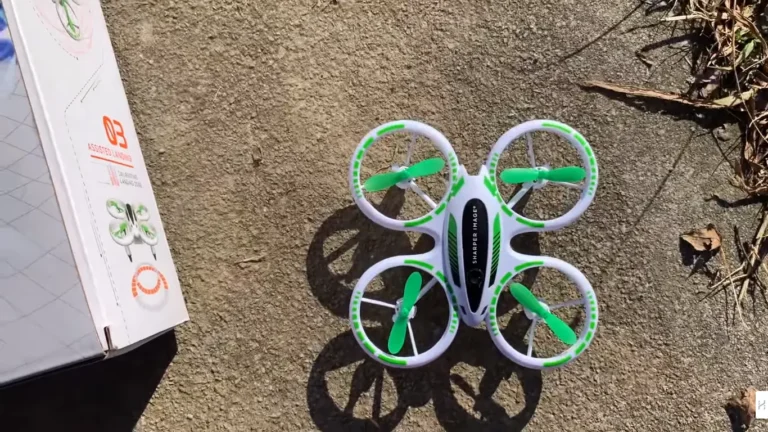Can Drones Fly in Winter? (Drone Flying Guide)

Yes, drones can fly in winter, but cold weather affects battery life, flight stability, and safety. If you want to fly your drone in the winter season then you will have to understand the temperature-related challenges and following proper precautions are vital.
So in this article, I am going to tell you all of the information about flying a drone in the winter season. You know it is the best season to see the beauty of nature and I also love to capture all of the snow-covered trees and areas.
Well, in this article I am also going to give some of my best tips so that you can be so much more confident while flying a drone in the winter season.
So, let’s get started and know the essential information.
Key Takeaways
- Winter Flying Challenges: Cold weather affects drone battery, stability, and safety. Understanding temperature-related issues and precautions is vital.
- Battery Tips: Keep batteries warm, monitor voltage, and plan shorter flights to counter reduced performance in cold.
- Air Density Impact: Cold air is denser, affecting lift and flight efficiency. Lower altitudes provide more lift and better performance.
- Safety Concerns: Winter conditions pose risks like reduced visibility, strong winds, and icing. Follow safety protocols and avoid very cold weather.
- Regulatory Compliance: Abide by drone regulations for safe flying. FAA (USA), Transport Canada (Canada), and CAA (UK) have specific rules for winter operations.
- Effective Techniques: Pre-flight battery checks, calibration, gradual warm-up, and post-flight care ensure optimal drone performance in winter.
Can drones fly in Winter weather conditions?
Yes, drones can indeed fly in winter weather conditions. But if you want to become a professional drone pilot and want to know precisely all the things about flying drones then you will have to be aware that cold temperatures can impact aspects such as battery performance.
It is also seen that cold drone flights in the winter can also cause problems for flight stability and overall safety for a drone.
If you want to fly your drone in the winter season then you should understand temperature challenges and adhering to proper precautions is essential.

Okay, let’s know some of the impacts on drone battery performance.
What impact does cold weather have on drone battery performance?
Cold weather can significantly affect the performance of drone batteries, Let me tell you all of the challenges that every drone pilot should be aware of. If you want to fly your drone easily in the winter season then you will have to understand how temperature impacts battery life.
Battery chemistry and performance in the cold
When temperature drones, the chemical reactions within drone batteries slow down,
affecting their overall performance. This reduction in chemical activity leads to several notable impacts on battery behavior:
Reduced Capacity: Cold weather can cause batteries to deliver less overall capacity. This means that even though your battery might be fully charged, its energy output might be lower than expected in colder temperatures.
Voltage Fluctuations: Cold weather can cause temporary voltage drops during flight, leading to fluctuations in drone behavior. These voltage drops might trigger low-battery warnings even if your battery has ample capacity left.
Decreased Flight Time: Due to reduced capacity and voltage fluctuations, flight time can be notably shorter in cold weather. Drone pilots should anticipate shorter missions and plan their flights accordingly.

Now you know how it can impact your drone battery now let’s know how you can solve this problem. So if you want to keep your drone OKAY while flying it in the winter season then below are some of my best tips that you should follow.
My best tips to keep your drone battery safe in winter
To make the most out of your drone flights during the winter season and mitigate the impact of cold weather on battery performance, consider the following tips:
Pre-Flight Preparation: Keep your batteries at room temperature before flying. Avoid storing them in extremely cold and try to warm them up slightly before use.
Keep Batteries Warm: Use hand warmers or insulation to keep your batteries warm during transport and in-between flights. This helps maintain their optimal operating temperature.
Monitor Voltage: Keep a close eye on your drone’s voltage levels during flight. If you notice significant voltage drops, consider ending the flight early to avoid damaging the battery.
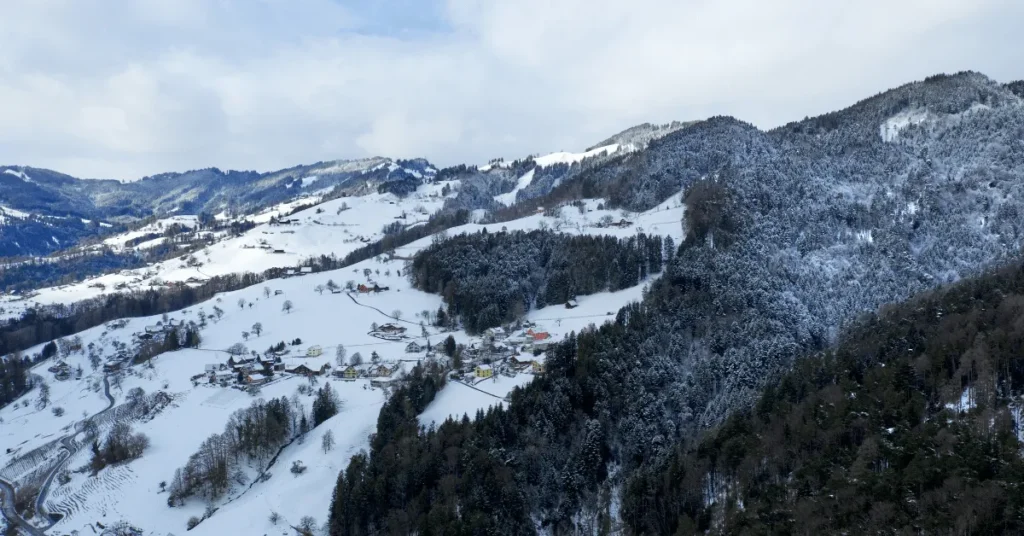
Flight Planning: Plan shorter flights to account for reduced battery capacity. This allows you to maximize the available power and ensure a safe return-to-home capability.
Battery Rotation: If you have multiple batteries, rotate them during your flight sessions. Keeping spare batteries warm while in use can help maintain consistent performance.
How does cold air density affect drone flight efficiency?
Drones fly by creating lift, which is the force that opposes gravity and allows an object to fly. The list is created by moving wings through the air. The faster the wings move, the more lift is created.
The density of the air affects the amount of lift that is created. Cold air is denser than warm air, so it takes more energy to move a drone through cold air. This means that drones will have less flight efficiency in cold air.
Now as I have given you a little bit of idea what is the density of the cold air? Now, let’s know how cold air affects drone flight.
There are several ways that cold air affects drone flight. Let’s know them one by one.
The first one is reduced lift. As I have mentioned above, cold air is denser than warm air, so it takes more energy to move a drone through cold air. This means that drones will have less lift in cold air, which can make it difficult to take off and maintain altitude.
The second one is increased battery drain. Drones use their batteries to power the motors (I hope you know that) that spin the propellers.

When the drone is flying in cold air, the motors have to work harder to move the propellers through the denser air. This can lead to increased battery drain, which can shorten the flight time of the drone.
The third bigger effect is the increased risk of icing. In very cold weather, the moisture in the air can freeze on the drone’s propellers and other surfaces. This can reduce the efficiency of the drone and even cause it to crash.
So, Now, as I have told you all of the effects now you might be thinking that there should be some solutions to these as well. Well, don’t worry I have got you covered.
Big Tip For You
To ensure optimal drone performance during winter flights:
- Pre-Flight Warm-Up: Keep batteries at room temperature before flying to maintain efficiency.
- Battery Insulation: Use hand warmers or insulation to retain battery warmth.
- Voltage Monitoring: Keep an eye onvoltage levels; land if you notice significant drops.
- Plan Short Flights: Cold reduces battery capacity; plan shorter flights.
By safeguarding your battery, you’ll enjoy longer, safer flights in chilly conditions. Happy flying!
Sulman Khan, SEO Expert Drone Blogger at SK Best Gadgets
Tips for flying drones in cold weather
If you are planning to fly your drone in cold weather, there are a few things you can do to improve flight efficiency:
First of all, choose a drone that is designed for cold weather use. Some drones are specifically designed for cold weather use. These drones have features that help them to fly more efficiently in cold air, such as heated propellers and batteries.
Okay, next warm up your drone before flying. If you take your drone out of the cold and immediately try to fly it, the motors and batteries may not be warm enough to operate efficiently. Allow your drone to warm up for a few minutes before flying it.

Fly your drone at lower altitudes like always. The air is denser at lower altitudes, which means that your drone will have more lift and will not have to work as hard to fly. The next and last tip that I want to share with you is to avoid flying in very cold weather.
If the temperature is below freezing, it is best to avoid flying your drone altogether. The risk of icing is too high for you and your drone as well.
So what you should keep remember always, cold air density can have a significant impact on drone flight efficiency. By following the tips above, you can help to improve the flight efficiency of your drone in cold weather.
What safety concerns should be considered when flying drones in winter?
Drones can be a lot of fun to fly, but it is important to be aware of the safety concerns involved, especially when flying in winter. Let me tell you some of the most important safety concerns to consider.
Cold weather can affect battery performance. Drone batteries are less efficient in cold weather, so they will drain faster. This can shorten your flight time and make it more difficult to control your drone. So you will have to be very careful regarding your drone battery.
You know in winter icing can be a problem. In very cold weather, the moisture in the air can freeze on the drone’s propellers and other surfaces. This can make the drone difficult to control and can even cause it to crash.
The wind can be more powerful in winter. Winter storms can bring strong winds, which can make it difficult to control your drone. It is important to check the weather conditions before flying and to avoid flying in windy conditions.

You know that visibility for everyone is very much important. So, visibility can be reduced in winter. Snow, fog, and rain can all reduce visibility, making it difficult to see your drone and avoid obstacles. It is important to fly in clear conditions and to be aware of your surroundings.
Now here is the last part for you and that is drones can be a hazard to wildlife. Drones can frighten wildlife and can even injure or kill animals. It is important to fly your drone responsibly and to avoid flying near wildlife.
If you follow these recommended safety concerns, you can help to ensure a safe and enjoyable experience when flying your drone in winter.
Okay, now, let’s know something about the regulations for drone flights in winter.
Are there any specific regulations or restrictions for drone flights in winter?
Yes, there are some specific regulations and restrictions for drone flights in winter. These regulations are designed to protect the safety of pilots, the public, and most importantly the environment.
Checking drone regulations, especially in winter conditions, is crucial to ensure safe and responsible flying. Drone pilots like me should adhere to specific rules and guidelines set by aviation authorities to avoid potential risks and legal issues.
Let me give you an overview of important regulations and links to official sources for more detailed information.
FAA regulations (The USA)
The federal aviation administration regulates drone operations in the United States. Whether flying in winter or any other season, drone pilots must follow these key regulations:
Please register your drone. All drones weighing between o.55 lbs and 55 lbs must be registered with the FAA before flying.
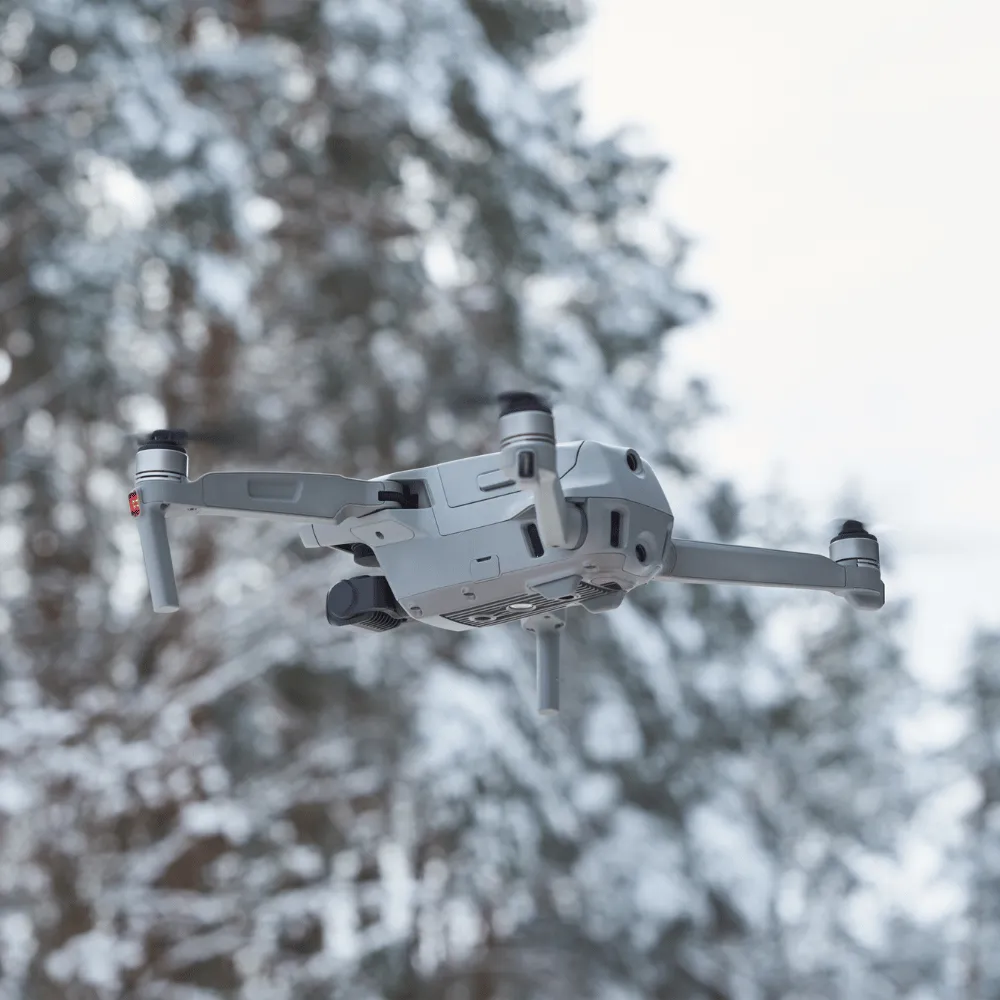
As I have mentioned fly your drone within a visual line of sight. Always keep your drone within your visual line of sight to maintain control and avoid collisions.
Please avoid no-fly zones. Do not fly your drone near airports, stadiums, national parks, and other restricted areas.
Please always stay under 400 feet. Keep your drone’s altitude below 400 feet above ground level and do not fly your drone over people. Avoid flying your drone directly over people not involved in the operation.
You should respect privacy. Do not invade people’s privacy by recording or photographing them without consent and fly your drone during daylight hours. Drone operations are permitted during daylight hours only.
If you want to know more then you should visit the official FAA website: Federal Aviation Administration (FAA)
Transport Canada regulations (Canada):
In Canada, the Canadian Aviation Regulations (CARs) govern drone operations. The rules that you should follow are below:
First of all, register your drone. Drones weighing over 250g must be registered with Transport Canada. Always fly your drone below 4oo feet. Keep your drone’s altitude below 400 feet.
This is the most important drone law: Do not fly your drone within 5.6 miles of an airport. Please fly your drone more than 100 feet away from people, animals, buildings, and vehicles. Always fly your drone during daylight hours.
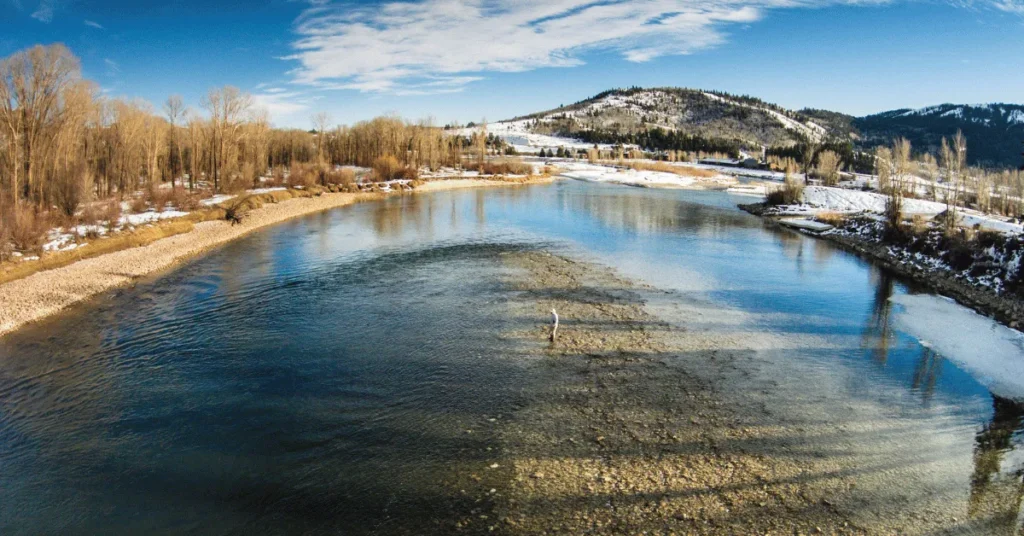
If you want to know more drone laws then visit the official Transport Canada website: Transport Canada – Drones
Civil Aviation Authority (CAA) Regulations (UK)
In the UK, the Civil Aviation Authority (CAA) sets rules for drone flights. The drone laws that they have are below.
Just like the others please first before flying register your drone. If your drone weighs over 250g then you must be registered with the CAA.
Always fly your stay below 400 feet. Please keep your drone’s altitude below 400 feet. Please maintain a distance of at least 150 meters from people, buildings, and crowds.
As usual, fly your drone during daylight hours and your drone flights are allowed during daylight hours only.
If you want to know more about drone laws then you should visit the official civil aviation authority website: Civil Aviation Authority – Drones
Now the last one.
Australia: Civil Aviation Safety Authority (CASA)
In Australia, the Civil Aviation Safety Authority (CASA) regulates drone operations. Let me tell you some of the important drone laws.
So the first rule is to register your drone with the CASA. Fly your drone under 400 feet from ground level. Please fly your drone away from people and maintain a safe distance from them and their properties as well.
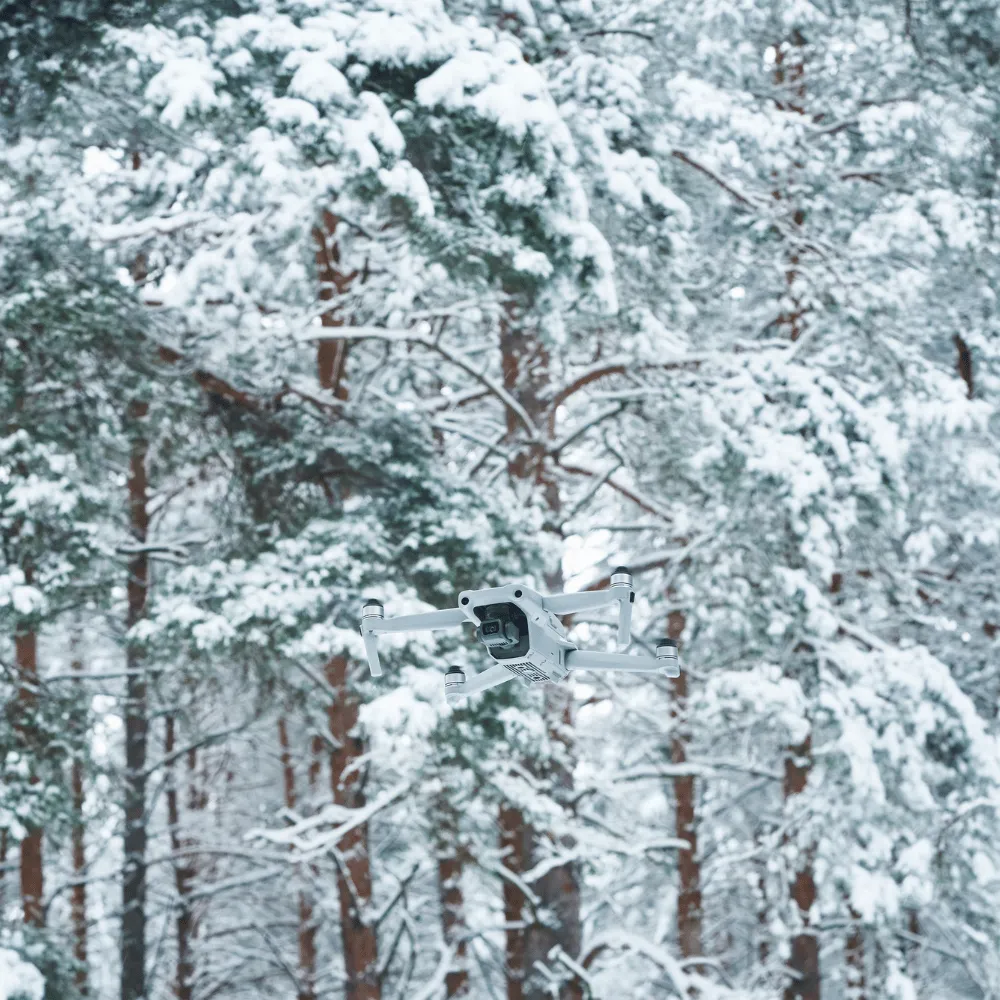
Just like the other drone laws only fly your drone in the daytime hours.
If you want to know more about drone laws then you should visit the official CASA website: Civil Aviation Safety Authority – Drones
It’s important to note that regulations can vary by country and region. You should always check with the local aviation authority for up-to-date and specific rules related to flying drones, especially in winter conditions.
Following these regulations will contribute to safe and responsible drone operations while enjoying the unique opportunities that winter flying presents.
How can one optimize aerial photography and videography during winter months?
If you want to optimize your aerial photography and videography during winter months then you should not go anywhere and read some of my best tips.
Winter can be a beautiful time of year to capture aerial photos and videos. The snow-covered landscapes, frozen lakes, and ice formations can create stunning images. However, there are some challenges to flying a drone in winter that you need to be aware of.
Let me tell you some tips for optimizing your aerial photography and videography during the winter months.
- As usual first check the weather conditions. Before you fly your drone, make sure to check the weather conditions. Avoid flying cold weather, strong, winds, snow, or fog.
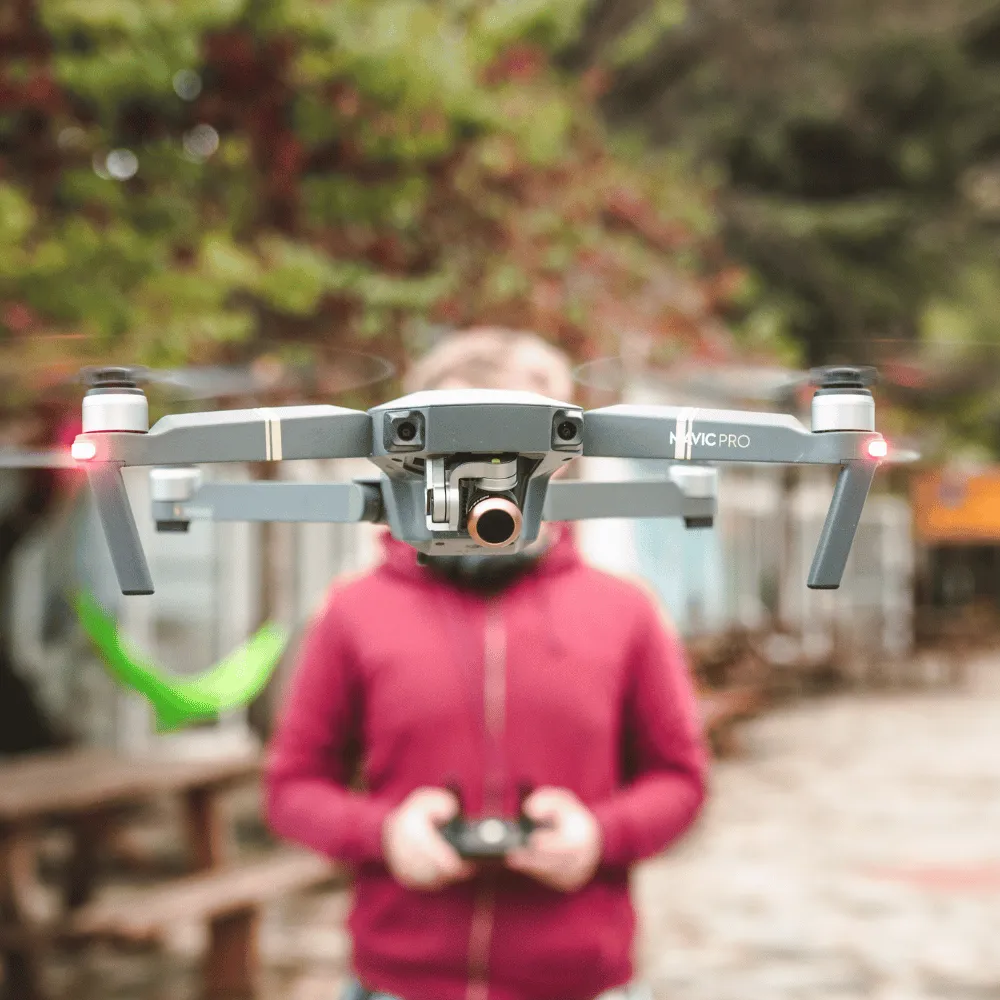
- After then inspect your drone. Please before flying your drone inspect it for any damage. Make sure that the batteries are fully charged and that the propellers are in good condition.
- Warming up your drone is very important. If you take your drone out of the cold, allow it to warm up for a few minutes before flying. This will help to prevent the batteries from draining too quickly and the motors from overheating.
- Please in the winter specifically fly your drone at lower altitudes. The air is denser at lower altitudes, which will help your drone to fly more efficiently.
- If you are shooting in snow, use a filter to reduce the glare. This will help to improve the contrast in your images and videos.
Winter can be a great time to get creative with your aerial photography and videography. Try experimenting with different angles and compositions.
If you follow these tips, you can optimize your aerial photography and videography during winter months and capture stunning images and videos that will take your breath away.
What flying techniques are recommended for operating drones in winter conditions?
Now please get ready this section of this article will be a bit longer.
Operating drones during winter demands a unique set of flying techniques to ensure safe and effective flights. In this section, we’ll explore expert-recommended strategies that drone pilots, like you, can employ to navigate the challenges of winter weather and maintain optimal performance.
So first of all pre-flight preparation: Ensuring drone readiness
As usual please check battery health. Cold weather can affect battery performance. Ensure your batteries are fully charged and in good health before taking off.

calibrate your drone’s sensors in cold conditions to ensure accurate readings and stable flight. Inspect your drone propellers, and camera for any signs of ice, snow, or debris that could impact performance.
Next, flight techniques for cold weather: navigating challenges.
When you are going to take off or land your drone then execute gentle takeoffs and landings to prevent jarring impacts that could affect delicate components.
Make altitude changes gradually to minimize sudden adjustments that could lead to instability.
Please always be mindful of wind conditions, as winter often brings stronger gusts. Adjust your flight path and speed accordingly.
Please avoid rapid maneuvers. Abrupt movements can be more challenging to control in cold air. Opt for smoother, controlled maneuvers.
The next tips are about maintaining visibility and control: essential tips
Please keep your drone within your line of sight to maintain visual contact and ensure you can respond quickly to any unexpected situations.
Always use bright colors. Attach brightly colored accessories to your drone to enhance visibility against white winter backgrounds.

If using First-Person View (FPV), ensure your video feed is clear and uninterrupted to maintain situational awareness.
Emergency preparedness: Planning for the unexpected
Set your drone’s return-to-home point before taking off in case navigation becomes challenging due to weather conditions.
Always carry spare batteries to extend your flight time and have backup power if your main battery drains faster than expected.
Post-flight care: Protecting your drone
Allow your drone to warm up gradually after the flight to prevent condensation from forming on sensitive components.
Please clean your drone after the flight to remove any ice, snow, or moisture that might have accumulated during the flight.
That’s it these are some of my best recommendations that you should keep in mind always.
Successfully operating drones in winter requires a combination of careful planning, skillful flying techniques, and a deep understanding of the challenges posed by cold weather.

By following these expert-recommended strategies, you can confidently navigate winter conditions, capture stunning aerial shots, and ensure the longevity of your drone’s performance.
Stay prepared, fly smart, and embrace the unique opportunities that winter drone flying presents.
For your ease, I have made a table below and you can take a screenshot of it and save it on your phone.
| Flying Techniques for Winter Drone Operation | Description |
|---|---|
| Pre-flight Preparation: Ensuring Drone Readiness | |
| Check Battery Health | Ensure batteries are fully charged and in good health before taking off. |
| Cold-Weather Calibration | Calibrate drone sensors for accurate readings and stable flight in cold conditions. |
| Inspect Equipment | Establish return-to-home points for navigation challenges due to weather. |
| Flight Techniques for Cold Weather: Navigating Challenges | |
| Gentle Takeoffs and Landings | Execute gentle takeoffs and landings to prevent jarring impacts. |
| Gradual Altitude Changes | Minimize sudden adjustments to maintain stability. |
| Avoid Rapid Maneuvers | Prevent abrupt movements that can be challenging to control in cold air. |
| Use Bright Colors | Enhance visibility with brightly colored accessories against snowy backgrounds. |
| Maintain FPV Feed | Ensure clear and uninterrupted video feed for situational awareness in FPV mode. |
| Emergency Preparedness: Planning for the Unexpected | |
| Set Return-to-Home Point | Allow the drone to warm up slowly after flight to prevent condensation. |
| Carry Spare Batteries | Extend flight time with backup power in case of unexpected battery drain. |
| Post-flight Care: Protecting Your Drone | |
| Gradual Warm-Up | Allow the drone to warm up slowly after the flight to prevent condensation. |
| Cleaning | Remove ice, snow, or moisture accumulated during flight to maintain performance. |
Important FAQs
Can drones fly in extremely cold weather?
How does cold weather affect drone battery life?
What is the impact of cold air density on drone flight efficiency?
How can I optimize my drone’s battery performance in winter?
Are there specific safety concerns when flying drones in winter?
Can I fly my drone at higher altitudes in winter to avoid the effects of cold air density?
Are there any regulations specific to flying drones in winter conditions?
How can I optimize my aerial photography and videography during the winter months?
Final Thoughts
Flying drones in winter weather conditions presents unique challenges that drone pilots need to address for safe and successful operations.
While drones can indeed fly in cold weather, their battery performance, flight stability, and safety can be affected. To optimize drone flights in winter, careful preparation and adherence to expert recommendations are essential.
Understanding the impact of cold weather on battery performance is crucial, as it can lead to reduced capacity, voltage fluctuations, and decreased flight time.
By following best practices such as keeping batteries at room temperature, using hand warmers or insulation, monitoring voltage levels, and planning shorter flights, drone pilots can mitigate these effects and ensure a safer and more efficient flying experience.
Cold air density also affects drone flight efficiency, impacting lift, battery drain, and even posing the risk of icing. To counter these effects, choosing a drone designed for cold weather, warming up the drone before the flight, flying at lower altitudes, and avoiding extremely cold conditions are recommended.
Safety concerns, such as battery performance, icing, wind, reduced visibility, and hazards to wildlife, should be carefully considered when flying drones in winter. Adhering to safety guidelines can prevent accidents and ensure a responsible and enjoyable drone-flying experience.
Moreover, understanding the specific regulations and restrictions for drone flights in winter, including FAA rules, is crucial to ensure compliance and prioritize safety.
For optimizing aerial photography and videography during winter months, thorough pre-flight checks, gradual altitude changes, maintaining visibility, and emergency preparedness are key strategies.
Watch a Video
Images by: Canva.com
Can You Fly a Drone in Class B Airspace? (Rules, Risks, and Regulations Explained)
“Ready to fly your drone in Class B airspace? ✈️ Get the lowdown on rules, risks, and regulations in our quick article. Stay informed – read it now!”


